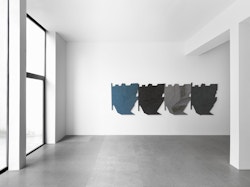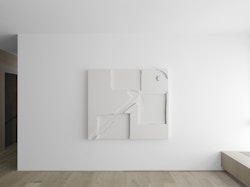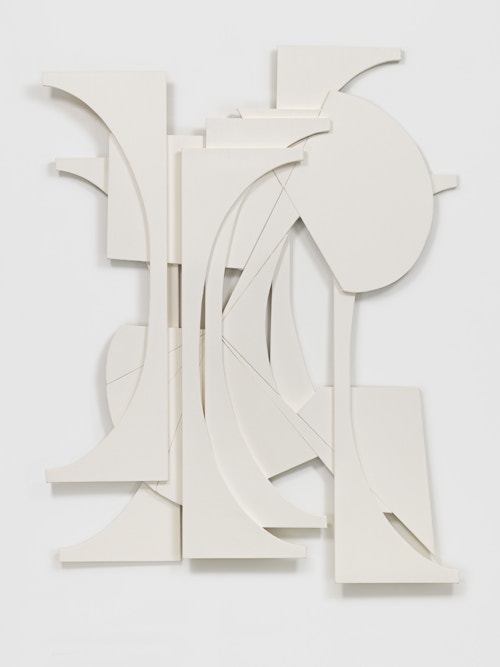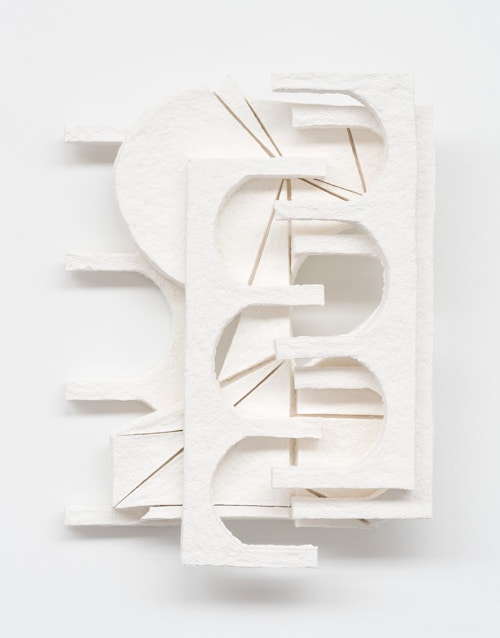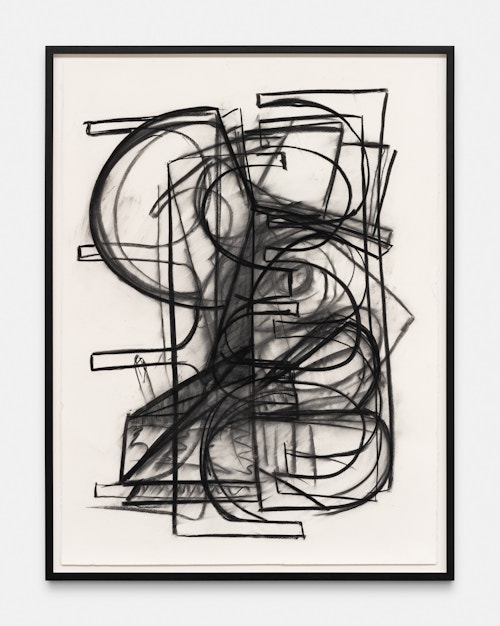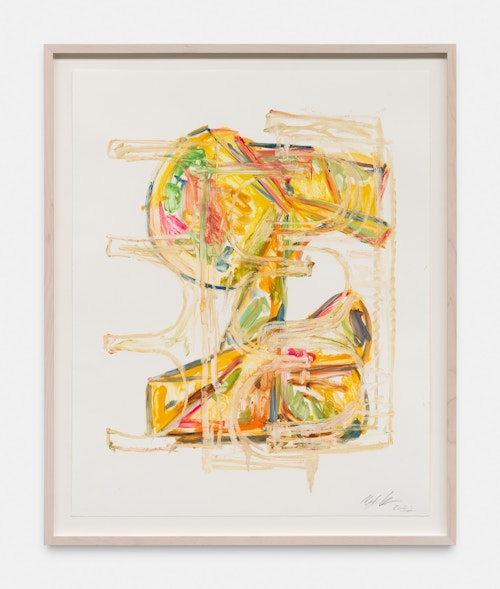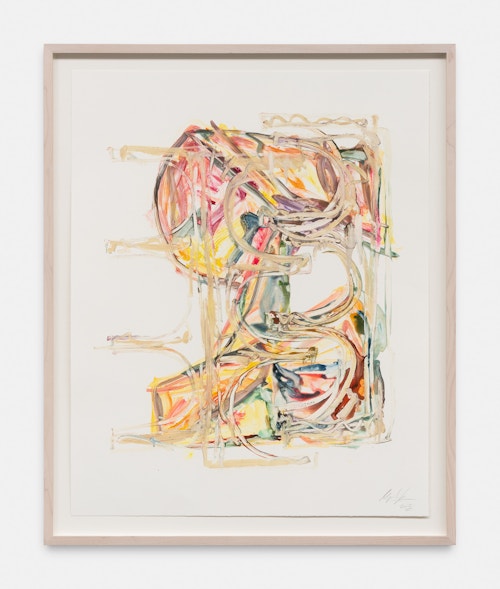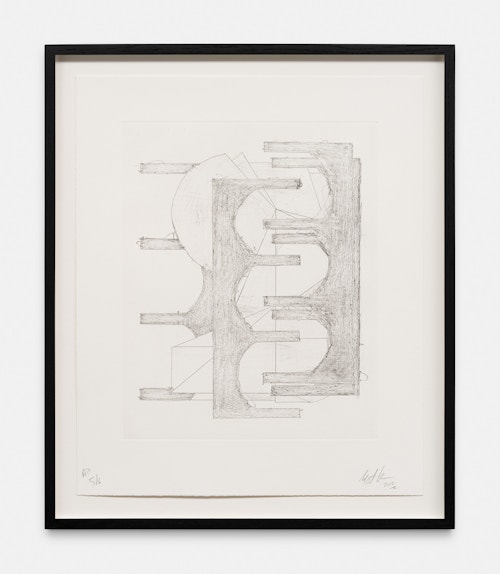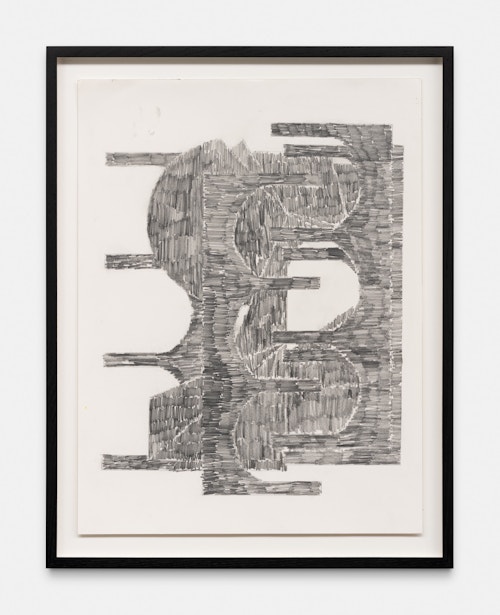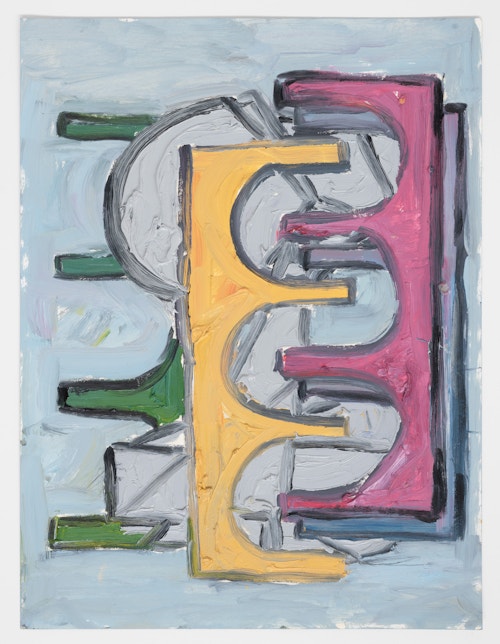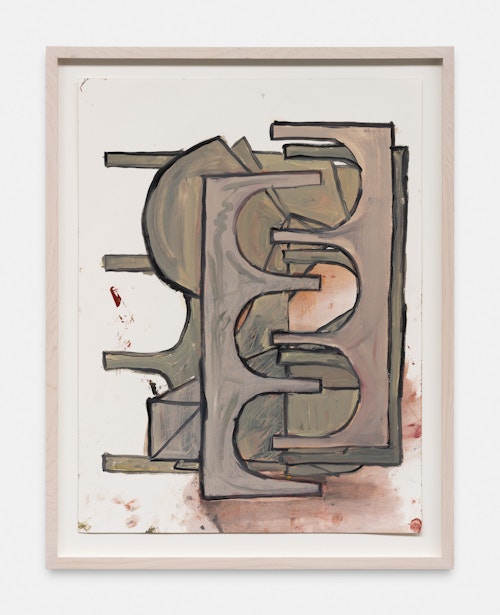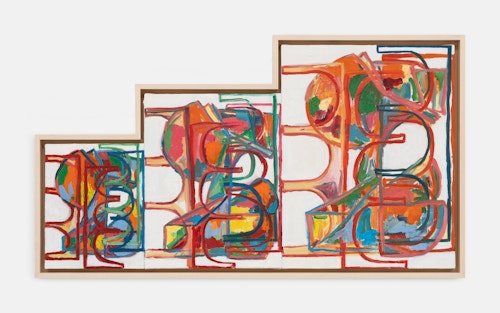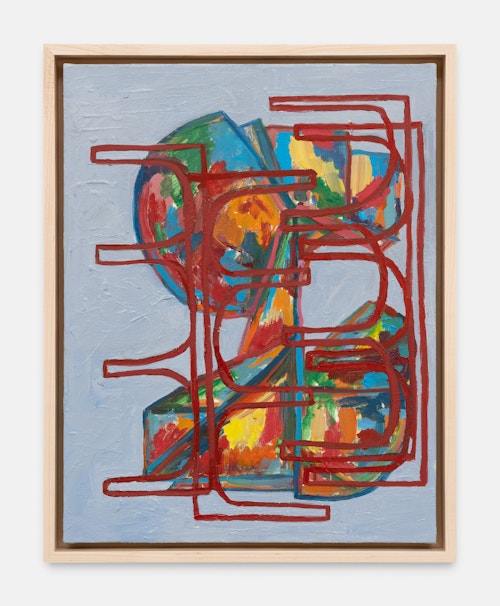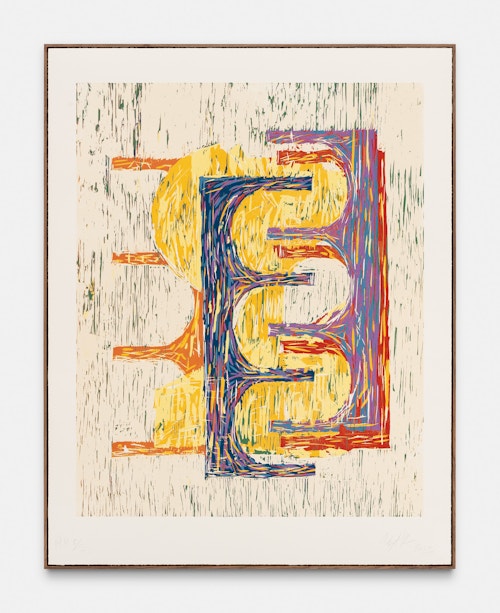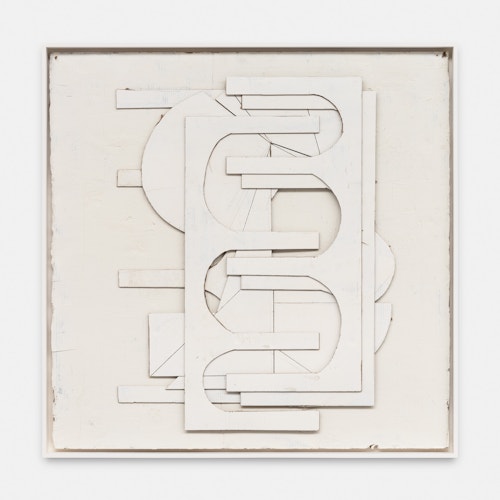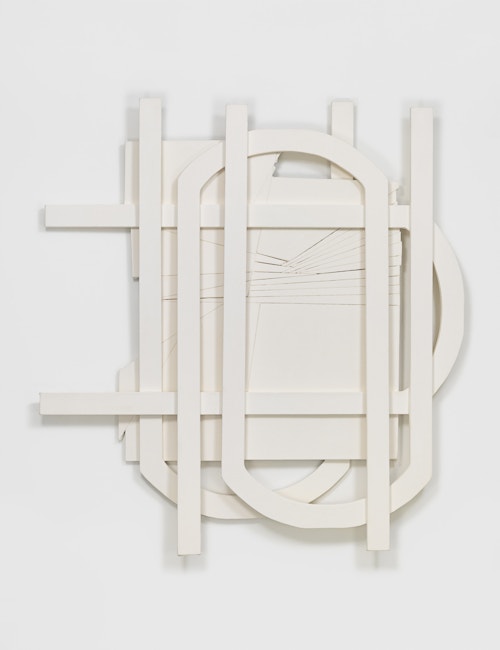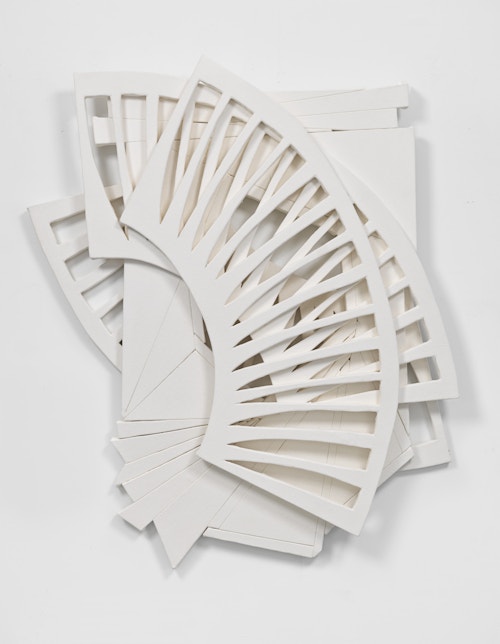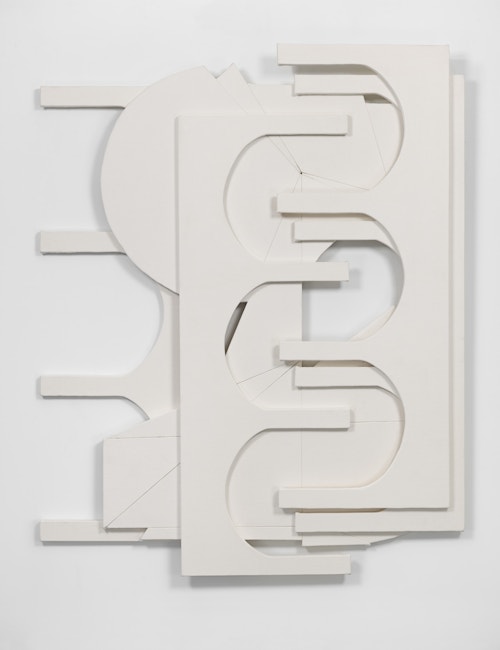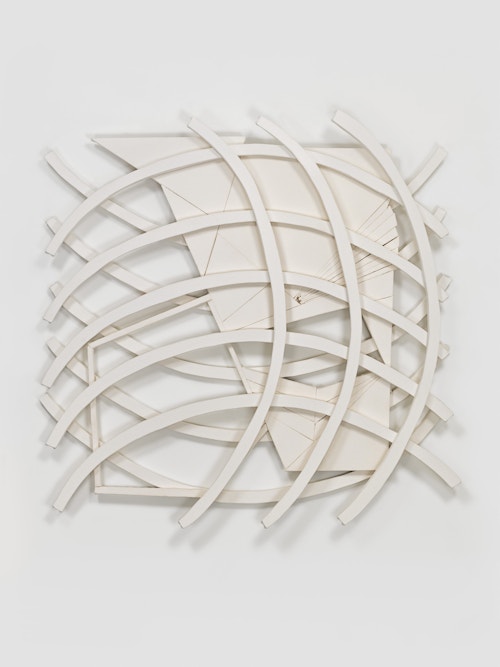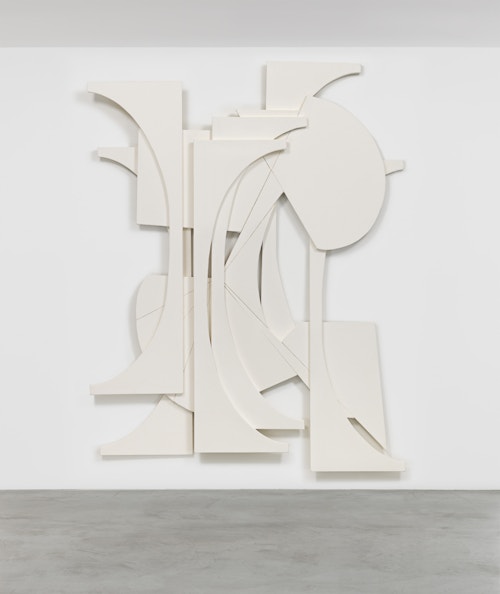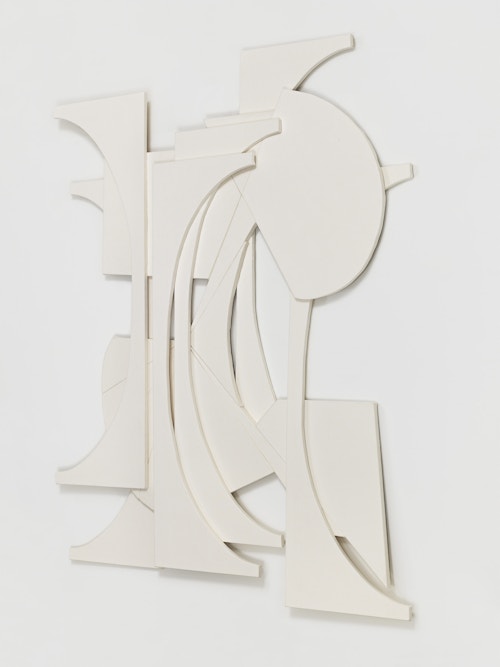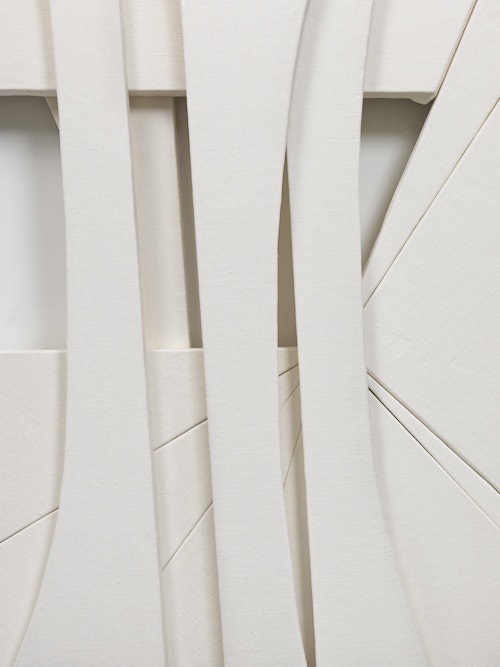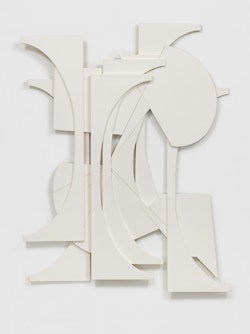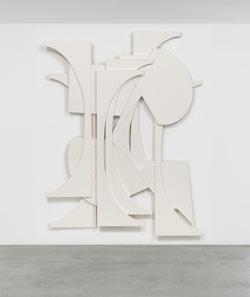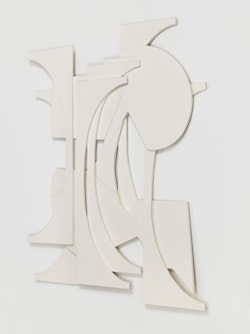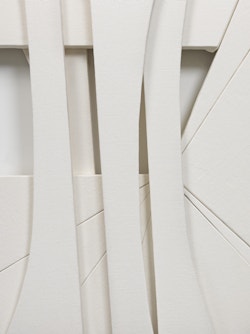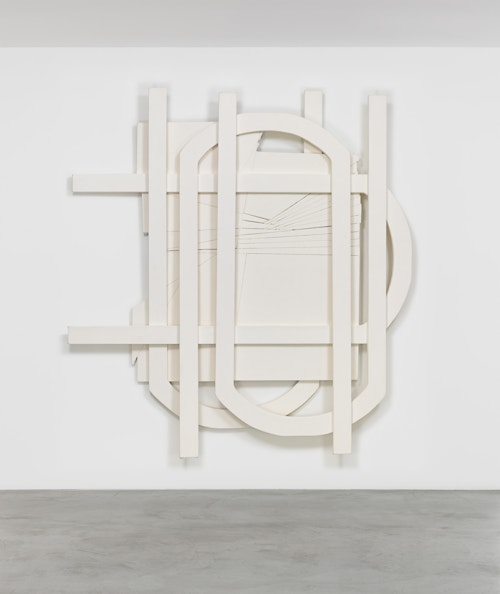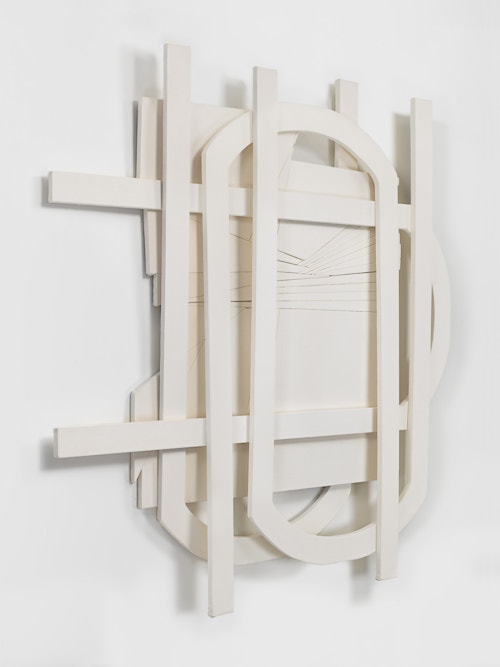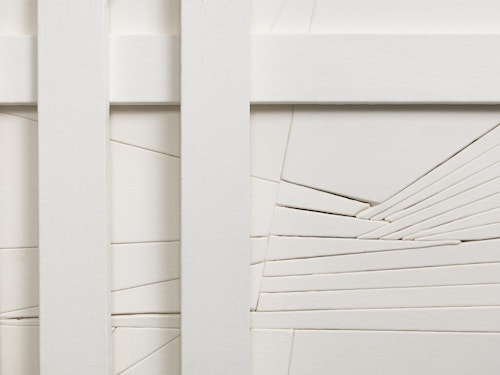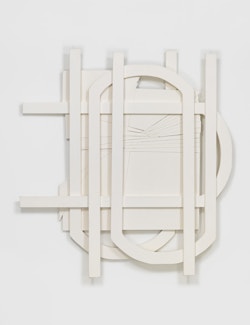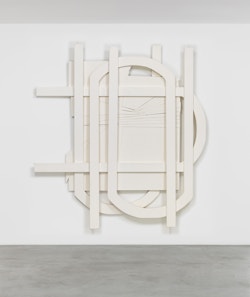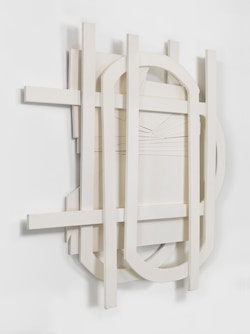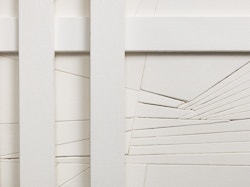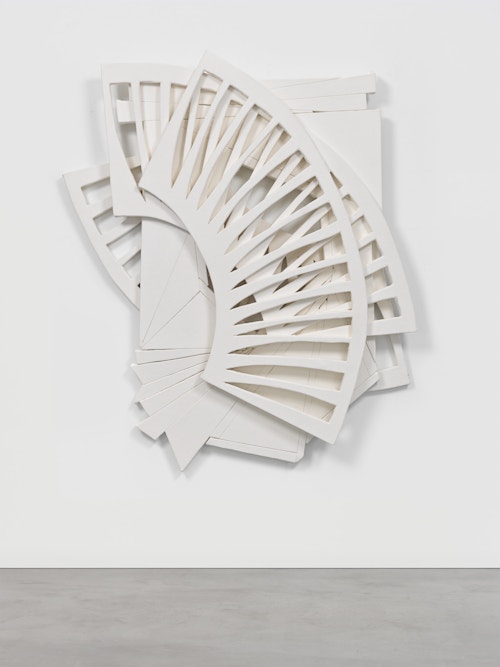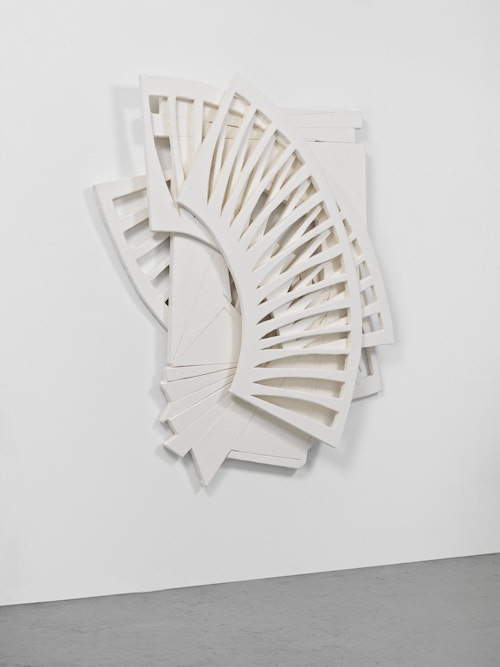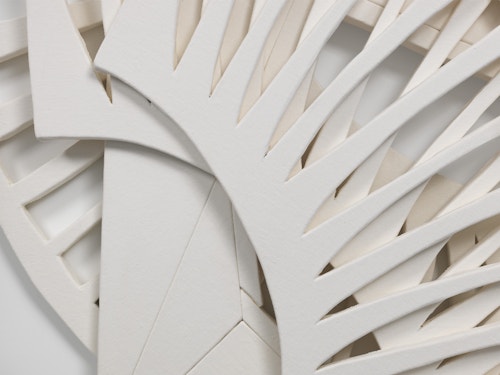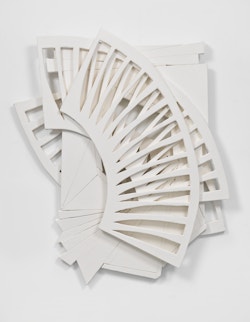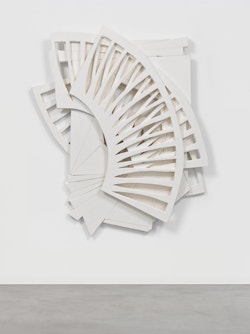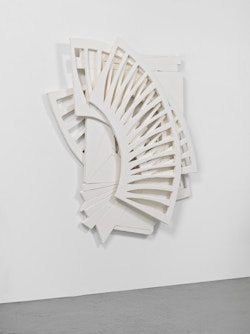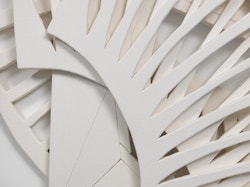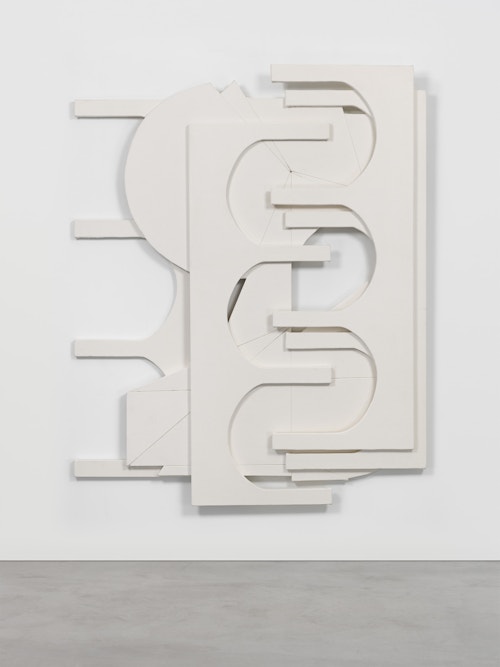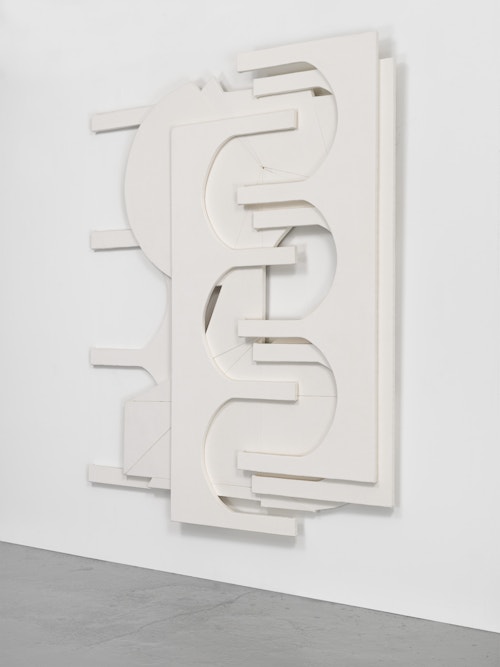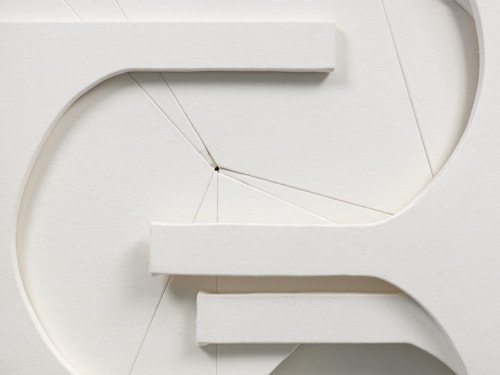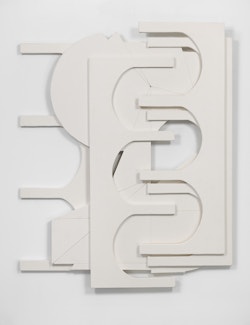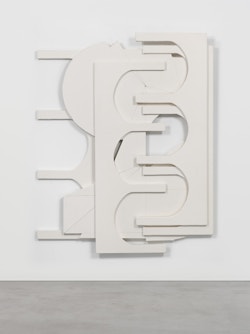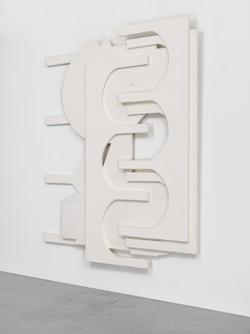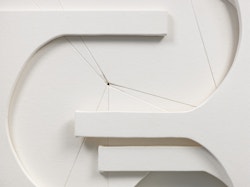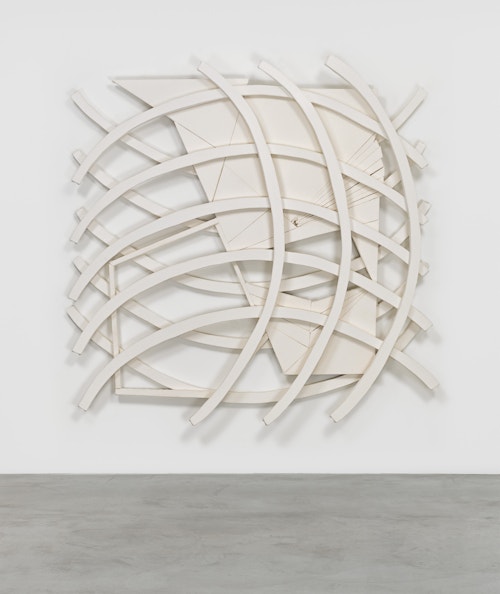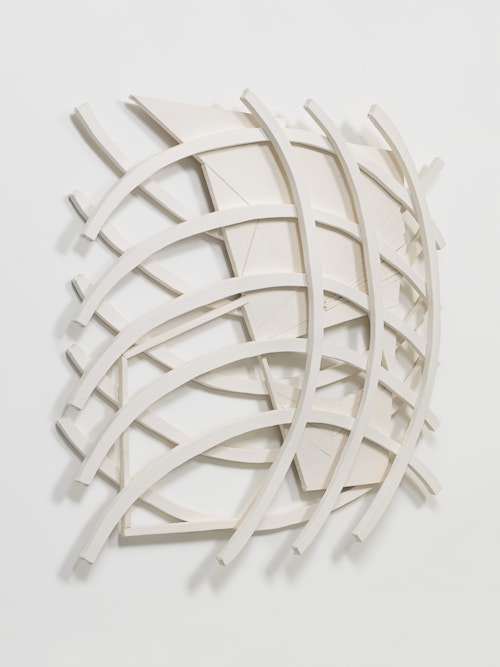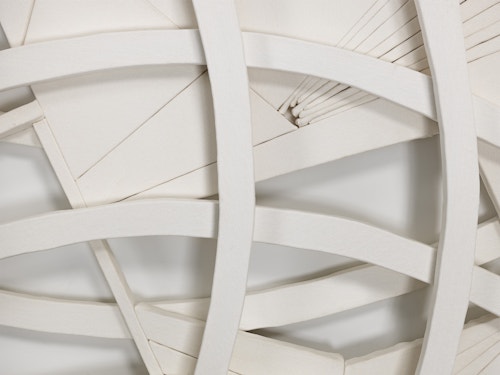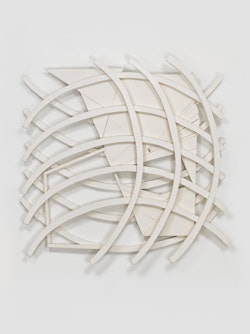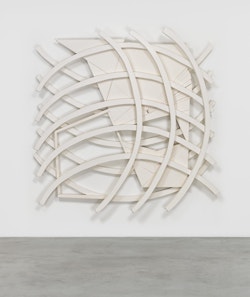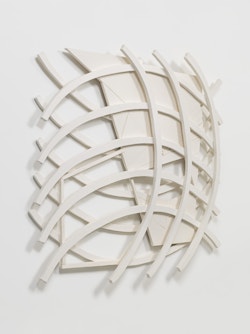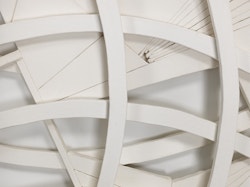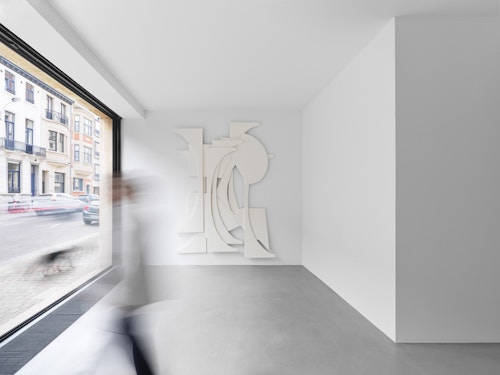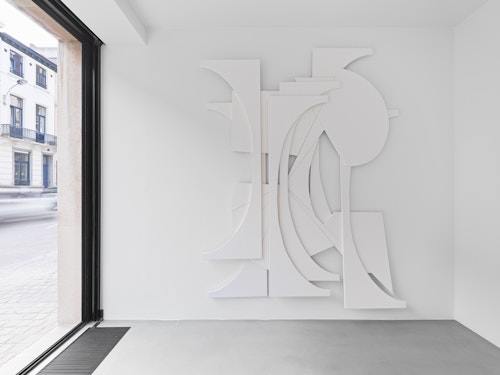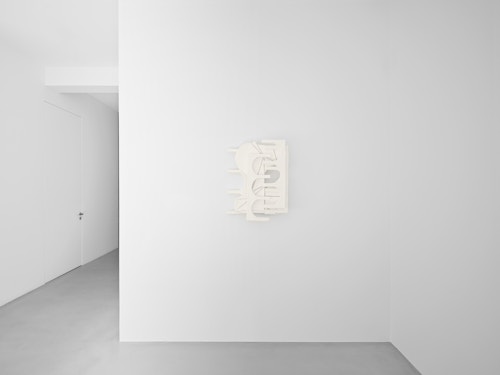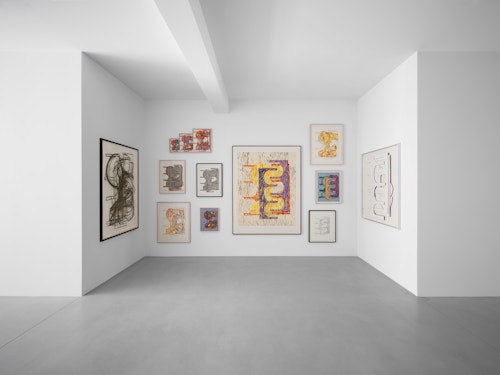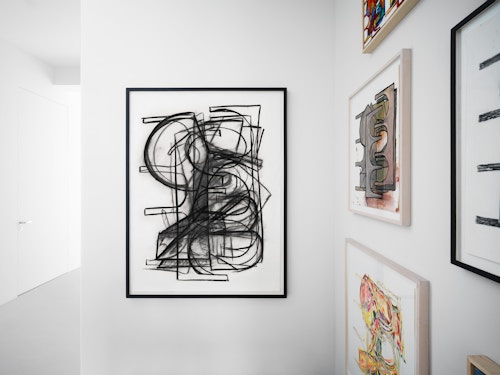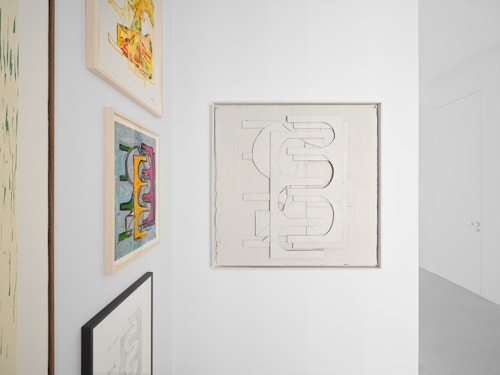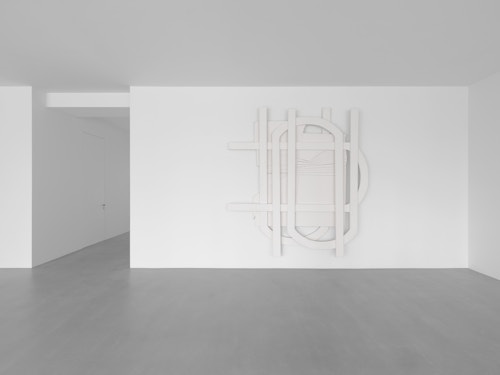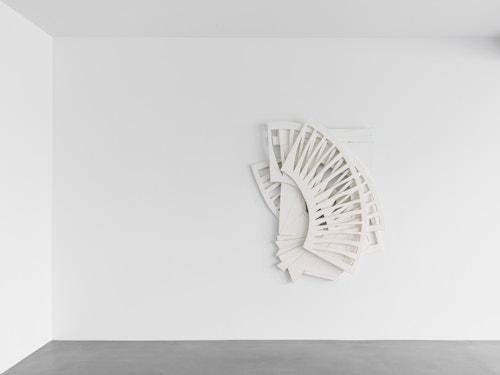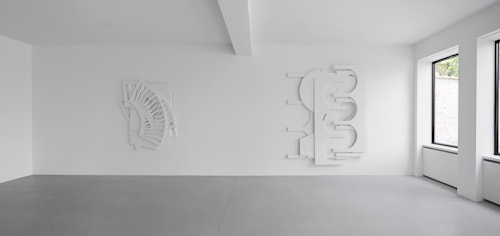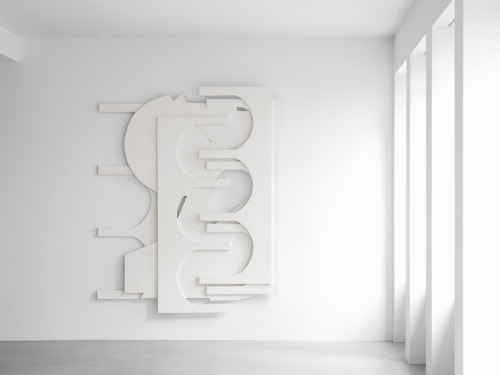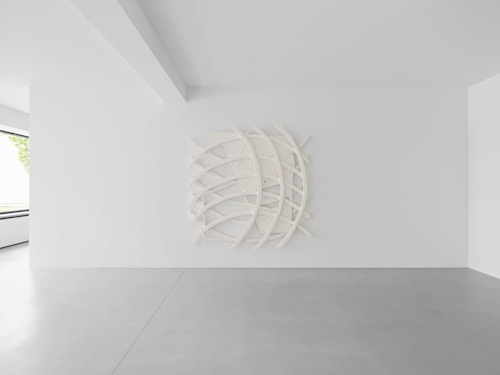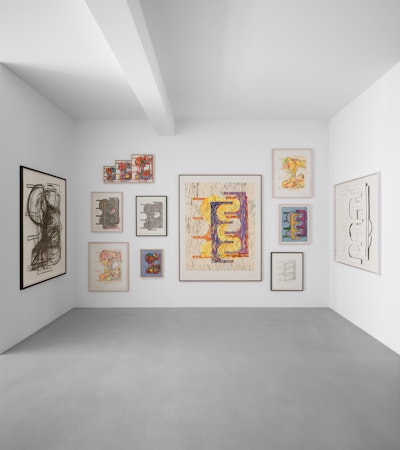
Wyatt Kahn Pile Ups / Cut Outs
In his most layered work to date, American artist Wyatt Kahn brings his spatial investigation of painting into ever sharper focus. Working mainly in wood, lead and canvas, he creates complex, three-dimensional compositions in which typically sculptural concerns – positive and negative space, depth and shallowness, shadow and light – play a determining role. Comprising large-format reliefs and related graphic works, his new exhibition explores the ideas of fragmentation and cohesion.
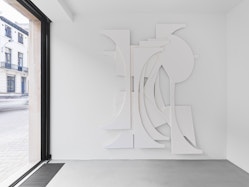
By focusing solely on painting’s underlying support, Kahn directs attention from the pictorial surface to the edges of the canvases and the divisional spaces. These crevices and openings are the spatial equivalents of lines and planes, while the wall becomes an integral part of the composition. Likewise, the idea of a canvas as a single and uninterrupted surface is challenged: these works are splintered, yet coherent. Juxtapositions of organic and geometric shapes, a number of which recur throughout the artist’s oeuvre, are the enduring carriers of meaning. Whilst notionally abstract, the origins of these forms can often be traced back to Kahn’s engagement with art history, especially early modernism, as well as to daily life and varied emotional states. The work Harlequin, for example, speaks to Picasso’s works on the same subject, while the forms in New Houston Street, Spring 2021 are derived from the arches of a new building in the said location.
Although colour featured heavily in Kahn’s previous exhibition at the gallery, it is absent in this recent body of work. What we see, instead, is a return to the raw, untreated linen. The unprimed canvas has its own natural hues and textures.
Another key development is the multi-layered construction of the works. Three distinct strata are discernible: an intricate configuration of canvases between two sets of open, repeating and transposed forms. The layers evoke the conventional organisation of a painting into foreground, middle ground and background. In Kahn’s compositions, however, they are as distinct as they are indivisible, weaving in and out of each other to form a single composite image. This tripartite structure also opens itself up to a temporal reading, calling to mind the idea of a merging of past, present and future. One could also interpret the empty canvas as a tabula rasa, an allusion to the absence of preconceived ideas. “On the one hand, they are fully completed objects. On the other, they have a canvas in a state that would typically be considered incomplete or in progress – it would normally be gessoed and painted,” Kahn explains. “I felt this captured the nature of the moment. I think we are in a moment of change yet much of it is very unfinished. There is both great anxiety and also incredible hope and beauty. I wanted these works to embody all this.”In addition to the canvas reliefs, Wyatt Kahn presents a group of studies for New Houston Street, Spring 2021. Created before, during and after the making of this work, they testify to the importance of drawing and printmaking within his practice. Sketches, tracings, collages and charcoal sketches, as well as a selection of vibrant monotypes, provide a unique insight into the artist’s working methods, while also revealing Kahn to be a rigorous draughtsman.
Wyatt Kahn (b. 1983) lives and works in New York. Later this year, he will present seven monumental sculptures for his first public installation, in an exhibition organised by Public Art Fund. His work is included in the collections of the Whitney Museum of American Art, NY; Centre Georges Pompidou, Paris; MOCA, Los Angeles; Dallas Museum of Art; MCA, Chicago; and Albright-Knox Art Gallery, Buffalo.

